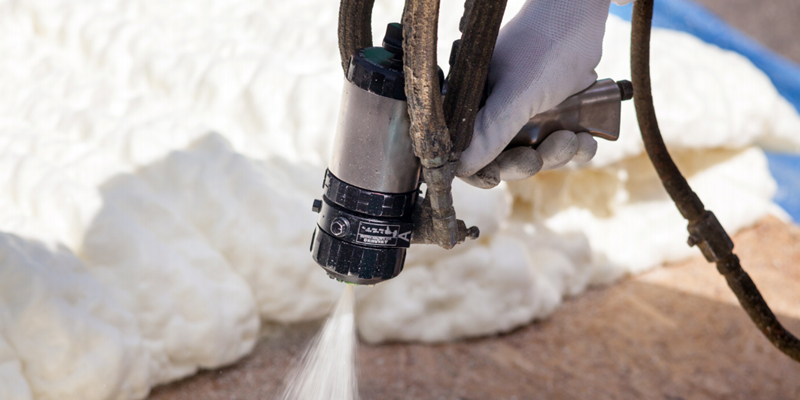What is Spray Foam Insulation?
Spray foam is a versatile insulation material that expands to form a continuous layer when applied. It consists of two main components: a mixture of isocyanates and polyols, additives and catalysts. These elements are combined on site to form a durable hardened foam. This foam can be used both as an insulator and as an air barrier, effectively sealing gaps and cavities in walls, floors and ceilings to prevent air leakage. Sprayed foam insulation is able to adhere to irregular shapes and surfaces, making it a widely used material in residential, commercial and industrial buildings.
Why Use Spray Foam Insulation?
The main advantage of spray foam insulation is its good air tightness. Traditional insulation materials, such as fiberglass or cellulose, can leave gaps or become compressed over time, reducing their effectiveness. Spray foam, on the other hand, expands to fill the smallest gaps, creating an airtight seal that effectively reduces energy loss and prevents ventilation. This saves energy and improves indoor comfort. In addition, spray foam can help prevent moisture penetration and reduce the risk of mold growth.
Types of Spray Foam Insulation
There are two main types of spray foam insulation: open-cell and closed-cell.
- Open-Cell Spray Foam: This type has a lower density and is more flexible. It is often used in interior applications such as walls and ceilings. Open-cell spray foam provides excellent soundproofing and is effective at filling larger gaps.
- Closed-Cell Spray Foam: Closed-cell foam is denser and provides a higher R-value per inch, making it suitable for applications requiring maximum thermal resistance. It also serves as a moisture barrier, making it ideal for exterior walls, roofs, and below-grade applications.
Benefits of Spray Foam Insulation
1.Optimal energy efficiency: By creating a continuous insulating barrier, spray foam reduces energy loss, thereby reducing heating and cooling costs.
2.Excellent air tightness: The airtight seal provided by spray foam prevents ventilation and helps keep the indoor temperature constant, thus increasing comfort.
3.Long service life and cost savings: Sprayed foam insulation is durable and not prone to settling or sagging, ensuring long-term performance and reducing the need for frequent replacement.
4.Moisture resistance: By preventing moisture from penetrating, spray foam helps prevent mold growth, which contributes to a healthier indoor environment.
5.Sound insulation: Spray foam can significantly reduce noise transmission and create a quieter living or working space.
Catalysts in Spray Foam Insulation
In the production of spray foam insulation, the catalyst will be mixed to play a role. Products such as MXC-T, MXC-C15 and MXC-37 enhance foam reactivity and curing properties and control spray foam reaction time.
- MXC-T: Used in polyether soft foams, molded foams, semi-rigid foams, and rigid foams. It is especially beneficial in automotive applications, providing a smooth reaction profile and low emissions.
- MXC-C15: Suitable for soft, semi-soft molding foam, and hard foam applications. It is versatile and can be used in polyether block foams and CASE (coatings, adhesives, sealants, and elastomers) applications.
- MXC-37: A low-odor catalyst primarily used in hard foams. It is also suitable for molding foams and polyether polyurethane blocks, offering excellent reactivity and stability.
In short, spray foam insulation coupled with specialized catalysts provides a solution for the energy efficiency, comfort and durability of modern buildings.
Post time: Sep-26-2024

